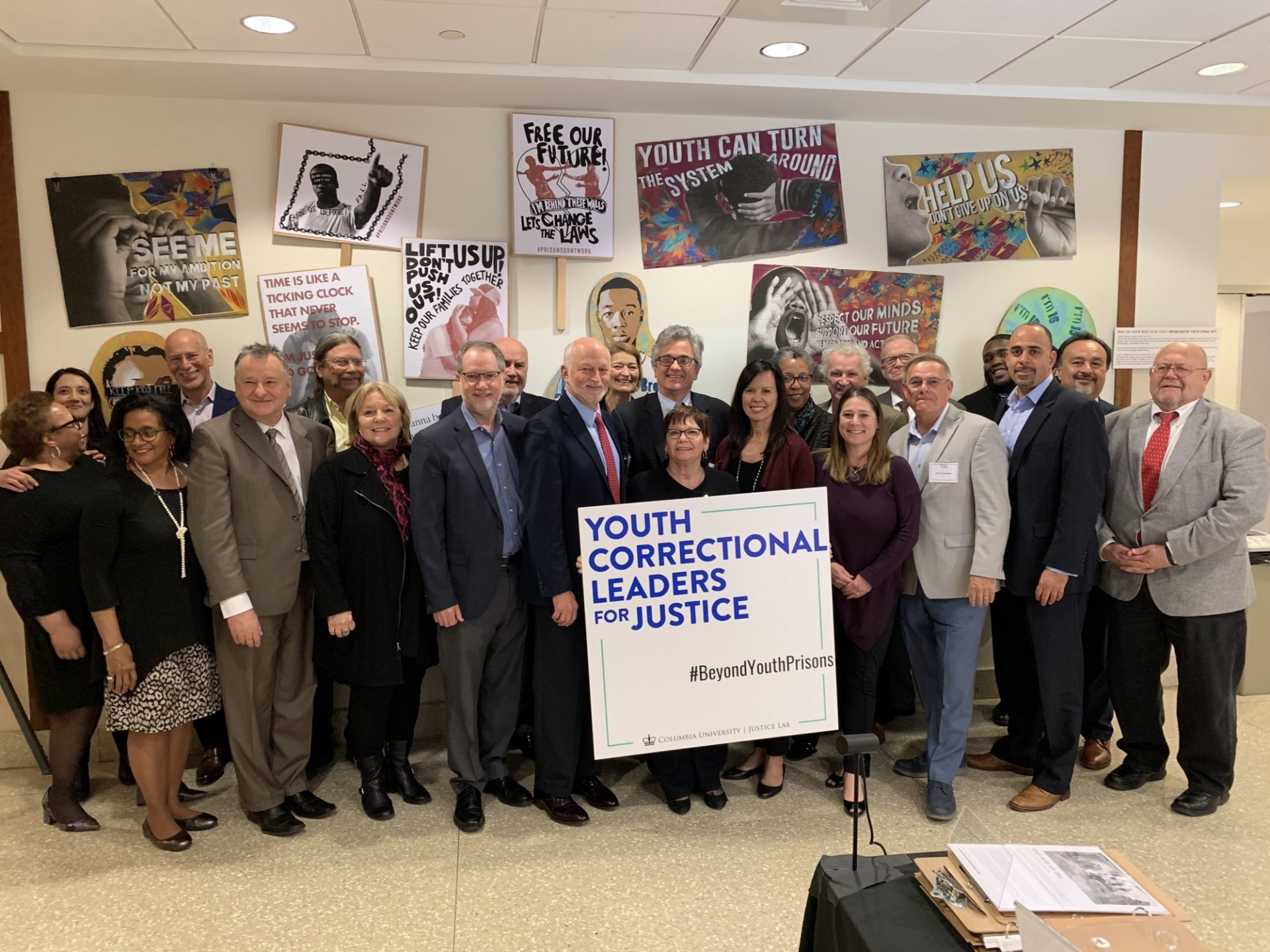The Justice Lab’s Youth Justice Initiatives (YJI) team aims to end the punitive youth prison model, shift resources into those communities most impacted by incarceration, and center those who are most impacted in the efforts to define and design what safety looks like.

We provide information, planning, advising, analysis and strategic communications support to accelerate the creation of responses, services, and opportunities for youth that enable them to flourish and thrive in their own homes and communities.
As the country’s youth incarceration rate has declined in recent years, there is now a growing movement to end the use of a punitive youth prison model in favor of a more community-centered approach. Nationwide, research and practice are demonstrating that it is possible to keep youth in their own homes and communities, with the support of their families, all while promoting safety, fairness, and accountability on all sides. Over time, the Justice Lab will accelerate this transformation through a multi-pronged initiative that will:
- Build the field’s knowledge base about successful deinstitutionalization efforts through a variety of different public-facing products, including a series of case studies on jurisdictions that have done this successfully.
- Create the Youth Correctional Leaders for Justice, a group that will unify and elevate the voices of current and former youth correctional leaders in calling for and guiding states and localities in their efforts to end the use of youth prisons.
- Advance a new vision of what it means to establish community capacity that supports youth and families, through events, communications, and other approaches.
- Cultivate a new generation of reformers to redefine what youth justice looks like. This effort will focus on developing leadership capacity among youth who have experienced the system, as well as those who have been actively been pushing for changes, within the jurisdictions where transformations are underway.
Our Work
Community-Based Alternatives to Incarceration for Youth. 9 March 2021.
Moving Beyond Youth Prisons. Marsha Weissman, Vidhya Ananthakrishnan, and Vincent Schiraldi. 27 February 2019.
Does Keeping Youth Close to Home Really Matter? Pre-publication Discussion. Marsha Weissman, Vincent Schiraldi, and Kendra Bradner. March 2018.
Youth Prisons as a Form of Violence: An International Human Rights Perspective. Vincent Schiraldi. 2018.
The Future of Youth Justice: A Community Based Alternative to the Youth Prison Model. Patrick McCarthy, Vincent Schiraldi and Miriam Shark, October 2016.
Carrión, Gladys and Schiraldi, Vincent. Former Youth Corrections Officials: We Want to Help Close Youth Prisons. Chronicle of Social Change, 10 April, 2019.
Marley, Patrick, “Report Sounds Cautionary Note on Closing Teen Prison Too Fast,” Milwaukee Journal Sentinel, 27 Feb. 2019, Online & Print editions.
Schiraldi, Vincent. Interview. Local News. WISN TV ABC, 27 Feb. 2019. *Top News Station in Milwaukee
Ananthakrishnan, Vidhya. Local News. WDJT TV CBS, 27 Feb. 2019.
Schiraldi, Vincent. “Milwaukee County Looks To New York City As It Prepares For Lincoln Hills Closure,” WPR News. Wisconsin Public Radio | NPR, Wisconsin: 27 Feb. 2019.
Ananthakrishnan, Vidhya and Schiraldi, Vincent. Earl Ingram Show. WRRD Radio, Milwaukee: 27 Feb. 2019.
Ananthakrishnan, Vidhya and Schiraldi, Vincent. Interview. WNOV Radio, Milwaukee: 27 Feb. 2019.
Murphy, Jarrett, “Tragedy, Advocates, Pols Paved Way for Bid to Keep Detained Youth Closer to Home,” City Limits, 27 Feb. 2019, Online.
McSwain, Courtney, “February, 2019 Roundup.” National Juvenile Justice Network, 27 Feb. 2019. Online.
Ananthakrishnan, Vidhya and Schiraldi, Vincent. “Columbia University Researchers Present Findings That Could Impact Juvenile Justice In Wisconsin.” Milwaukee Public Radio, Morning Edition. WUWM Radio, Milwaukee: 28 Feb. 2019.
Schiraldi, Vincent. “New York Sees ‘Drastic Improvement’ to Juvenile Rehabilitation.” NY 1 News, 3 Mar. 2019.
Schiraldi, Vincent. “What Wisconsin Can Learn From New York's Juvenile Justice System Overhaul,” Central Time. Wisconsin Public Radio | NPR, Wisconsin: 4 Mar. 2019.
Dikanovic, Alison, “Scrap it, Start Fresh, and Think:’ What Milwaukee Can Learn from New York City on Housing Young Offenders,” Milwaukee Neighborhood News Service, 6 Mar. 2019.
Schiraldi, Vincent and McCarthy, Patrick. Cuomo, don’t leave these kids hanging. New York Daily News, March 18, 2018.
Jones Candice, McCarthy, Patrick and Schiraldi, Vincent. Florida should shut down youth-detention centers where ‘fight clubs’ thrive. Miami Herald, October 18, 2017.
Schiraldi, Vincent. Juvenile Prisons: It’s Time to Close ‘Factories of Failure.’ The Crime Report, September 26, 2017.
Schiraldi, Vincent, and Schindler, Marc. It’s time to close all youth prisons. Washington Post, November 10, 2016.
McCarthy, Patrick, and Schiraldi, Vincent. Youth prisons don't reform, they damage. USA Today, October 28, 2016.
Horrific Conditions in Prisons “Common, not Exceptional,” Schiraldi writes. The Crime Report, November 11, 2015. Vincent Schiraldi.
Schiraldi, Vincent. What Mass Incarceration Looks Like for Young People. The New York Times, November 10, 2015.
Schiraldi, Vincent. Why We Need to Shut Down Juvie. The Marshall Project, December 22, 2015.